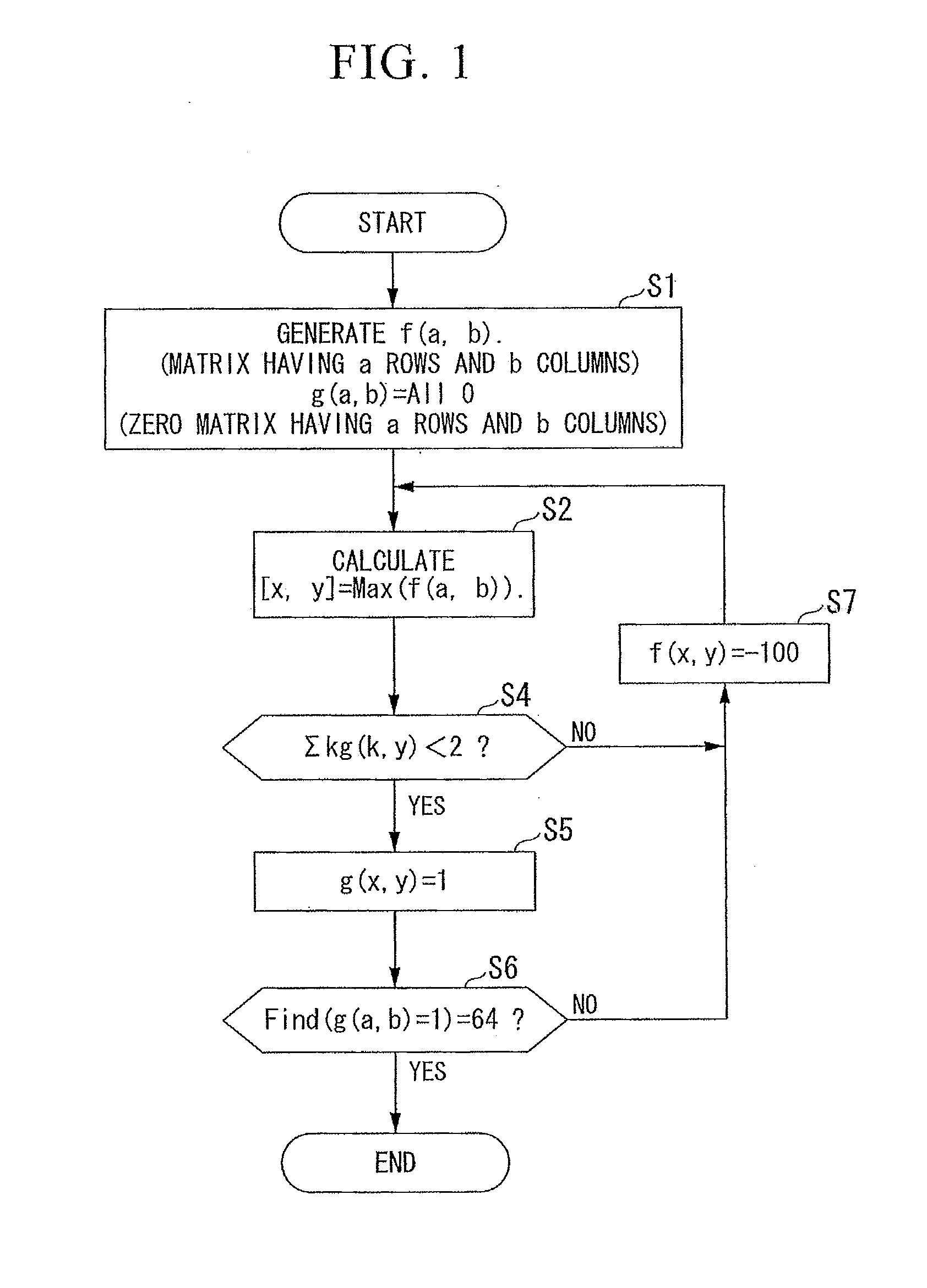Radio communication system, radio communication method, radio communication device, reception device, and program
a radio communication system and radio communication technology, applied in the field of radio communication systems, radio communication methods, radio communication devices, reception devices, and programs, can solve the problems of inability to flexible resource allocation using time-and-frequency axes, high peak power, transmission-power amplifying, etc., and achieve excellent frequency utilization efficiency.
- Summary
- Abstract
- Description
- Claims
- Application Information
AI Technical Summary
Benefits of technology
Problems solved by technology
Method used
Image
Examples
first embodiment
[0227]A first embodiment explains a method of determining subcarriers used for transmitting data from respective antennas based on channel conditions for respective subcarriers and for respective antennas. A radio communication system of the first embodiment includes multiple mobile station devices and a base station device. The base station device is a reception device of the first embodiment. The mobile station device is a transmission device of the first embodiment. The number of mobile station devices simultaneously connected to the base station device is two. The number of transmission antennas included in each mobile station device is also two. Signals are transmitted from a total of four transmission antennas.
[0228]A transmission method used by the mobile station device is DFT-S-OFDM. The total number of subcarriers is 32. The number of subcarriers used for each antenna of each mobile station device is 16. The number of reception antennas of the base station device is also tw...
second embodiment
[0251]The second embodiment explains a configuration of a reception device to which SC / MMSE (Soft Canceller / MMSE)-technique is applied, in which with respect to single-user-MIMO-and-multi-user-MIMO-mixed signals subjected to the spatial-and-spectral mapping of the present invention, replicas of received signals are generated based on the reliability of demodulated data, unnecessary interference (replicas) are subtracted from the received signals, and then a series of operations, such as equalization and demodulation, is repeated, thereby gradually increasing the reliability of the demodulated data.
[0252]Similar to the first embodiment, it is assumed in the second embodiment that the number of mobile station devices simultaneously connected to the base station device is two. The number of transmission antennas included in each mobile station device is also two. Signals are transmitted from a total of four transmission antennas. A transmission method used by the mobile station device ...
third embodiment
[0282]The first and second embodiments have explained the case where spatial-and-spectral mapping is performed under the condition that there are always two signals to be multiplexed onto each subcarrier. As explained in those embodiments, if signals interfering with one another can be cancelled on the receiving side, spectral mapping may be independently performed for each antenna on each transmitting side in consideration of only a channel variation. The following embodiment explains a mapping method of each transmission antenna independently determining a spectrum to be used when the number of signals to be multiplexed is not limited as in the first and second embodiments.
[0283]FIG. 10 illustrates a flow for determining subcarriers to be used for implementing the third embodiment. Like reference numerals denote like operations in FIGS. 1 and 10. The difference from FIG. 1 is that the operation in step S4 is deleted. This difference depends on the fact that the limit of the number...
PUM
 Login to View More
Login to View More Abstract
Description
Claims
Application Information
 Login to View More
Login to View More - R&D
- Intellectual Property
- Life Sciences
- Materials
- Tech Scout
- Unparalleled Data Quality
- Higher Quality Content
- 60% Fewer Hallucinations
Browse by: Latest US Patents, China's latest patents, Technical Efficacy Thesaurus, Application Domain, Technology Topic, Popular Technical Reports.
© 2025 PatSnap. All rights reserved.Legal|Privacy policy|Modern Slavery Act Transparency Statement|Sitemap|About US| Contact US: help@patsnap.com



